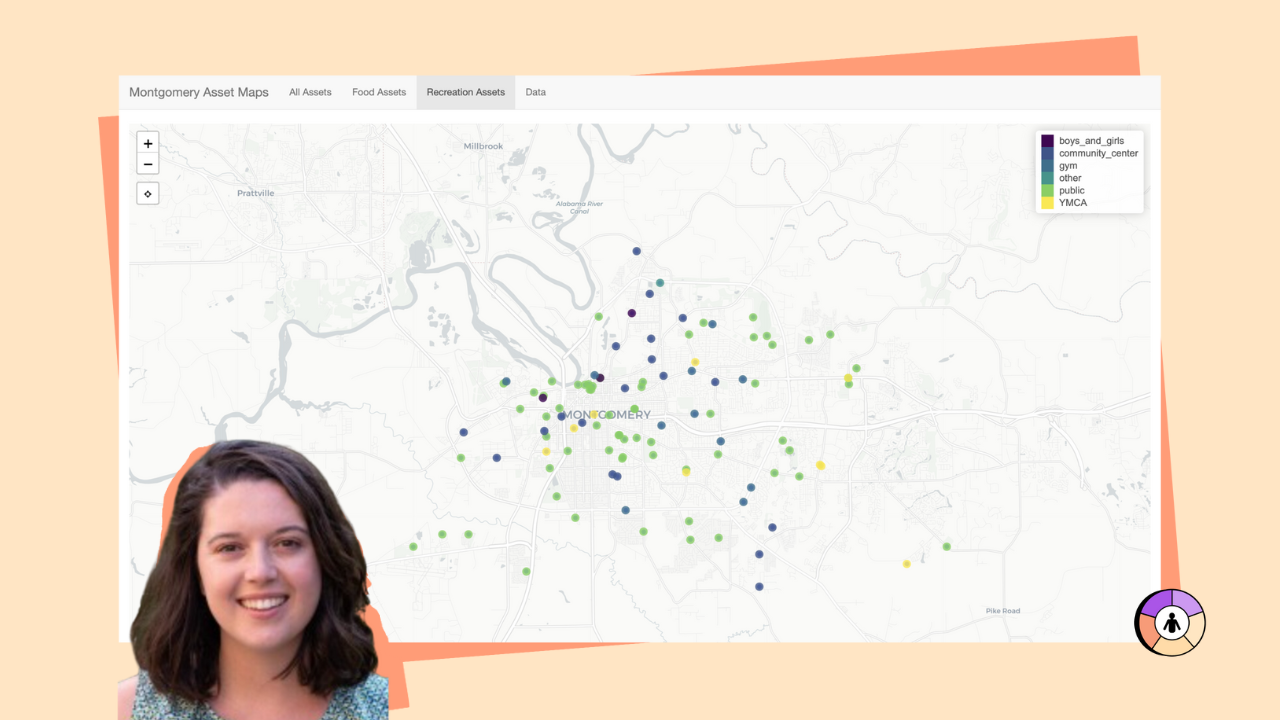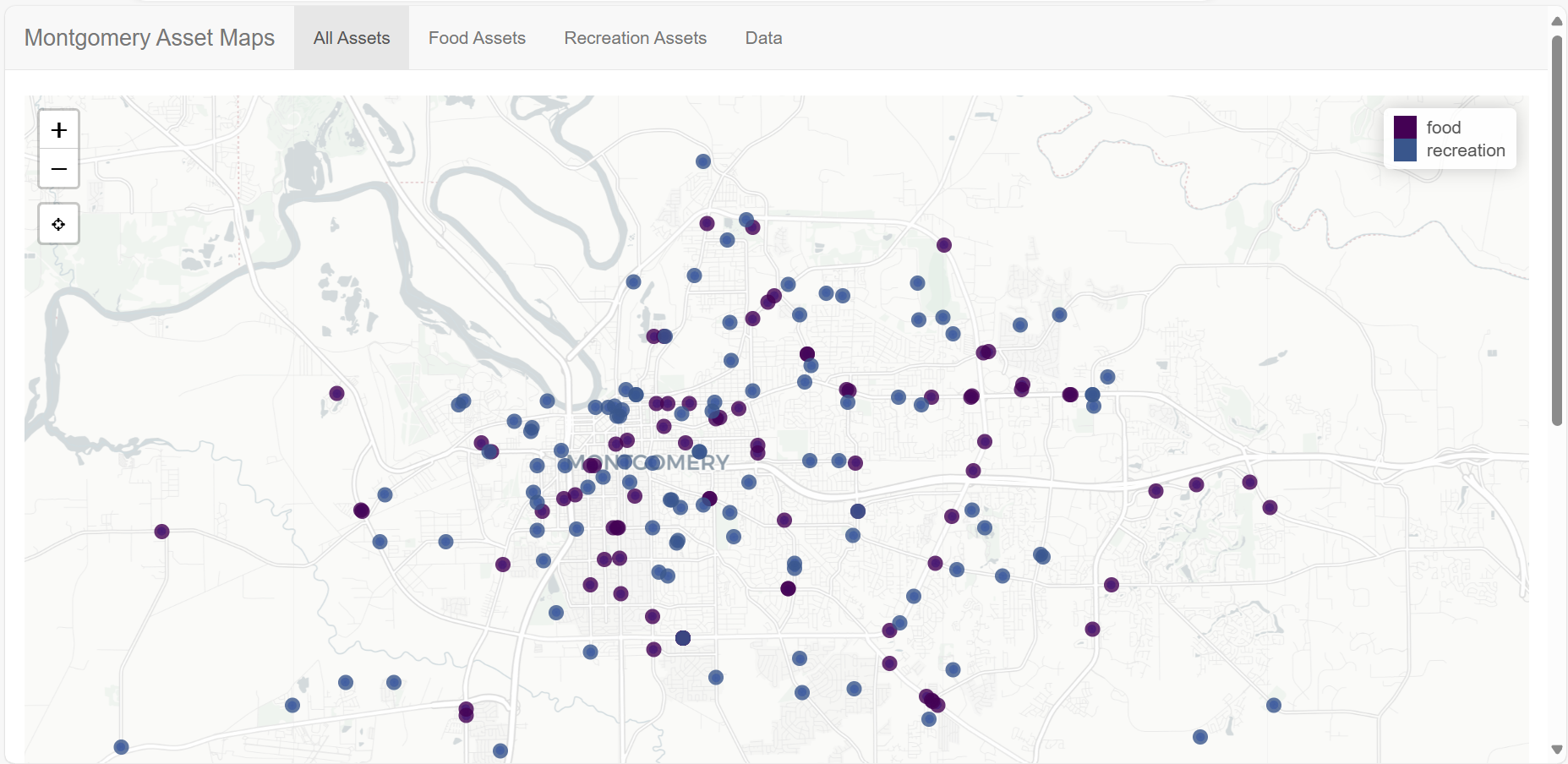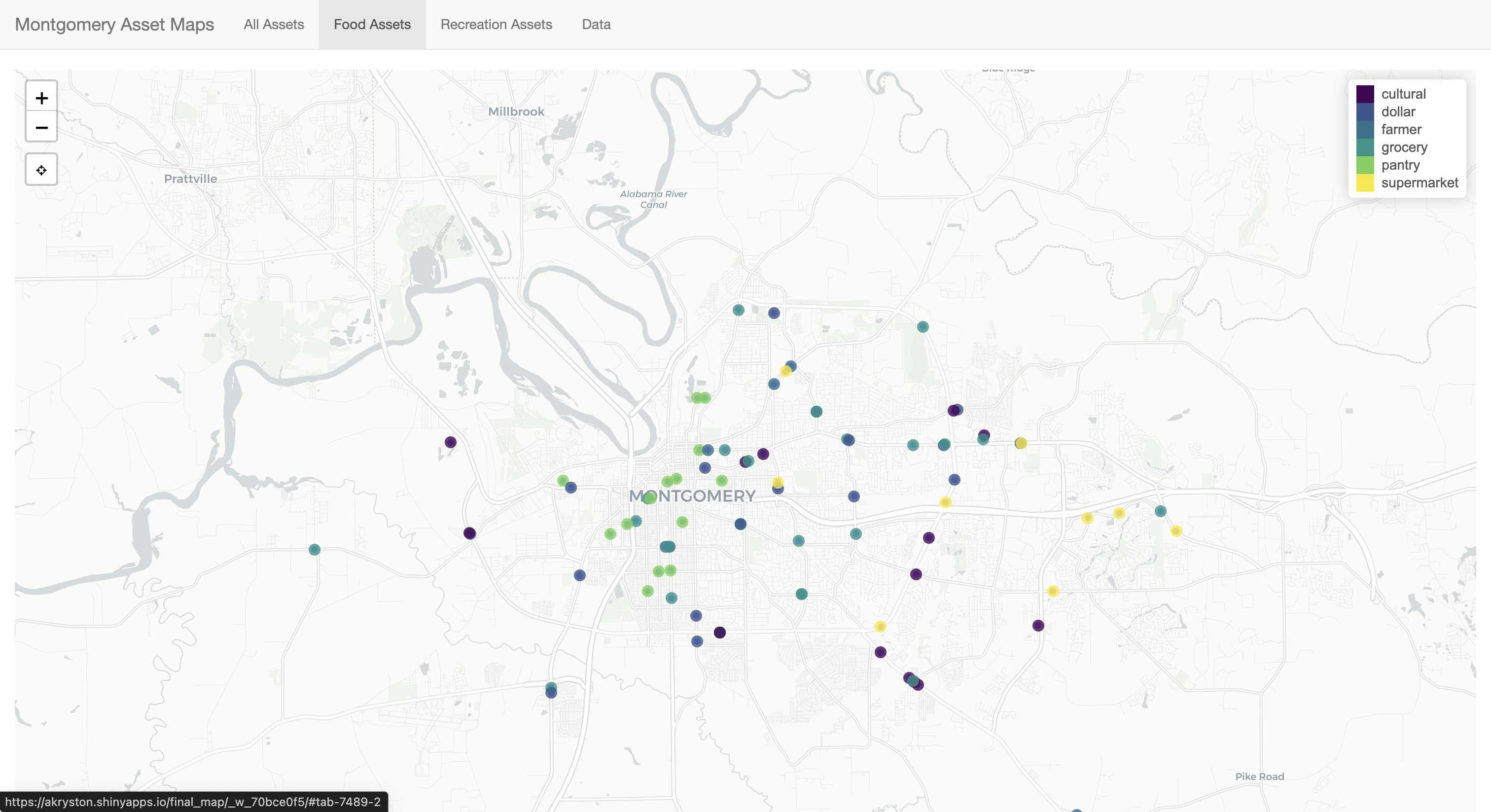Mapping Montgomery
Earlier this year, we invited fifteen fellows to develop their own web mapping applications, centered on equity and designed with communities in mind, using the SDOH & Place Toolkit. From July to September, we'll feature final fellow applications each week.

The Montgomery, Alabama Asset Map
Technology used: R, R-Shiny
By: Amy Kryston, MS, MPH, UNC Gillings School of Global Public Health
Fellow cohort: Spring 2024
App Motivations
Amy, on behalf of her colleagues, wanted to highlight the many available resources in Montgomery, Alabama, especially those directly related to physical wellness, emotional and community wellness, and public safety. They also wanted to create a central hub where residents could locate and learn about resources.
The primary goal of this asset map is to provide a resource to the community and to community health workers (CHWs). Secondary goals include:
- identifying health disparities
- assessing access to health care and other resources
- informing health policy and planning decisions.
CHWs and community members must know where to access resources. It is also critical for city policy and programming to identify areas of social determinants of health (SDOH) deserts, to inform future resource development and allocation.
Community members and CHWs can utilize this map to find organizations or locations that can fill a need or address a challenge, specifically those related to the various SDOHs. This can also be used by policymakers at the City of Montgomery.
 Asset map view of all services available: recreation and food.
Asset map view of all services available: recreation and food.
Features
The current map provides information about various food resources, from farmers markets to cultural grocery stores to food pantries.
 Food resources displayed within the mapping application.
Food resources displayed within the mapping application.
Also, recreation resources, like public parks and private gyms.
 Recreational assets displayed within the mapping application.
Recreational assets displayed within the mapping application.
This is a very user-friendly map, and they've taken care to ensure it's accessible for most forms of color blindness and used other design knowledge. They are most proud, of course, of how they were able to engage the community and learn about what resources they were most interested in learning about.
Upcoming Features
There is still much work they would like to do, including:
- Adding more resource types (beyond food and recreation assets).
- Adding information about benefits, hours open, populations served, and more.
- Overlaying a map of public transit.
While there is ongoing work, this is a working draft that can still be accessed by Montgomery, Alabama community members.
Acknowledgements
Thank you to the community and City of Montgomery, Alabama, and the many wonderful partners and colleagues who aided in this project. And much thanks to this program. This work would not have been possible without the support of the SDOH & Place Fellowship!
If you are a community member or community healthcare worker of Montgomery, AL, or would just like to check out Amy's work, you can access the application here.
About the Author
Amy Kryston is a public health practitioner and researcher determined to alleviate the systemic marginalization of communities in the United States and globally. In her role with PIH, she assists in the evaluation of community health worker (CHW) integration into federally qualified health centers and retrospective evaluation of CHW programming during the COVID-19 pandemic. She also provides technical support to North Carolina community-based organizations and health departments and leads the evaluation of community health needs assessment with the City of Montgomery, Alabama. Amy holds a Bachelor of Science in Civil Engineering from Gonzaga University, a Master of Science in Civil and Environmental Engineering and Earth Sciences from the University of Notre Dame, a Master of Public Health from the University of North Carolina, Chapel Hill (UNC).
Prior to her current role, Amy conducted research on remotely sensed early detection of cholera outbreaks in Bangladesh and transboundary water policy of the Ganges River under multiple potential climate futures. At UNC, she received the University’s inaugural Environmental Graduate Research Scholarship for her work on access to safe sanitation in the United States. Amy continues to work the UNC Gillings School of Global Public Health Humanitarian Health Initiative as the program coordinator and as a technical advisor for community health and water and sanitation in Nicaragua. She is a co-founder and the current president of Switchback Gear Collective, a North Carolina non-profit organization working to advance outdoor equity.












